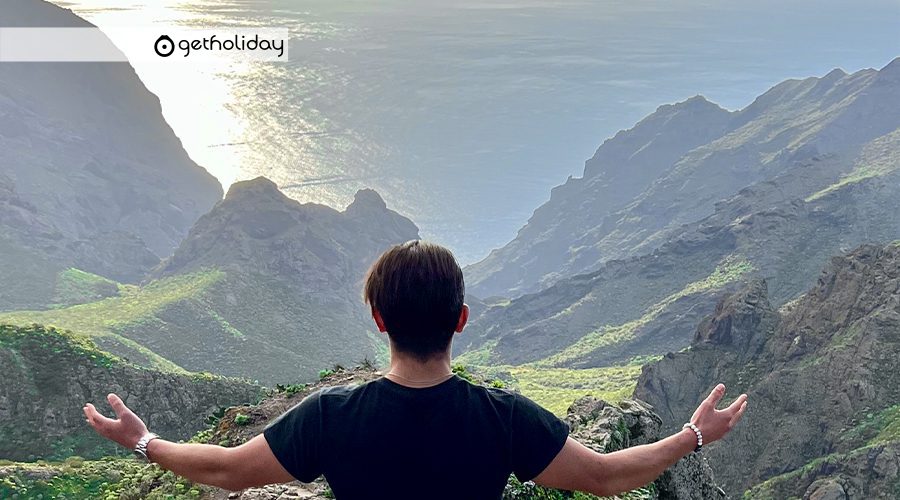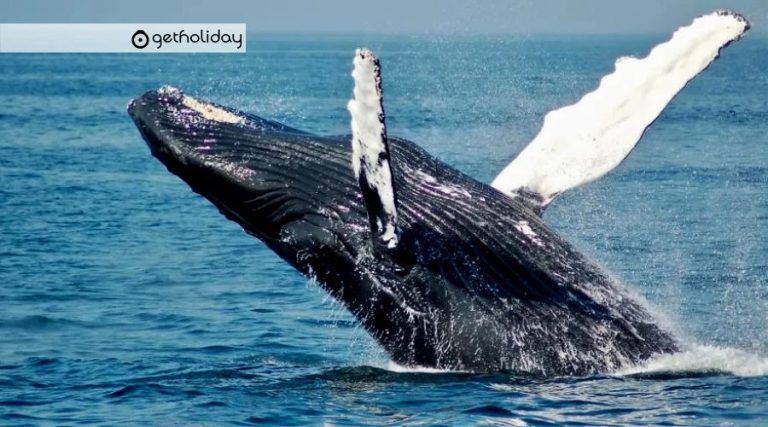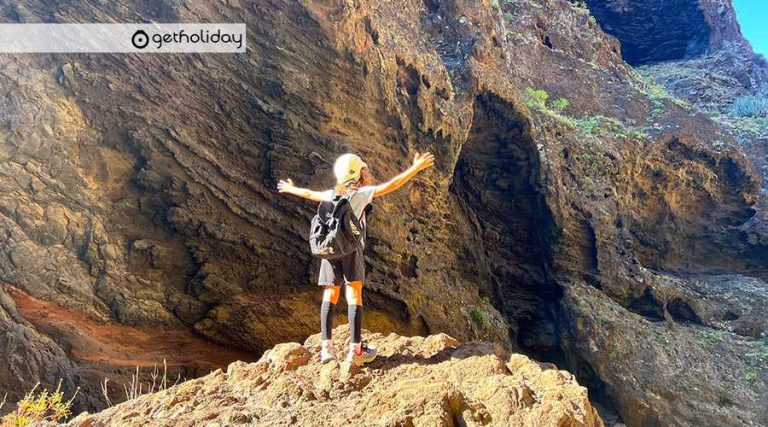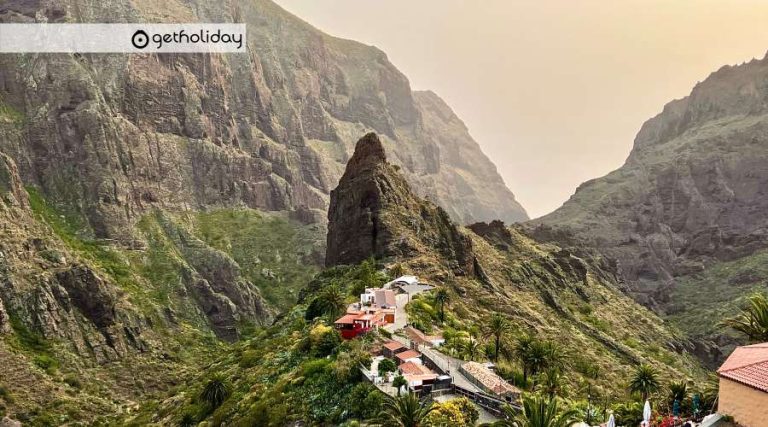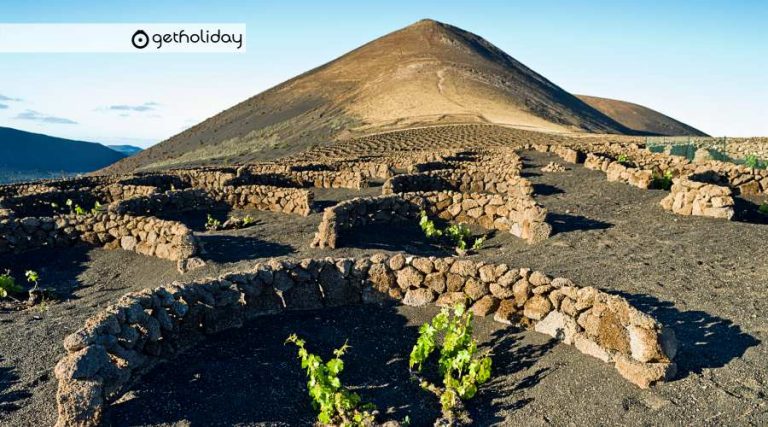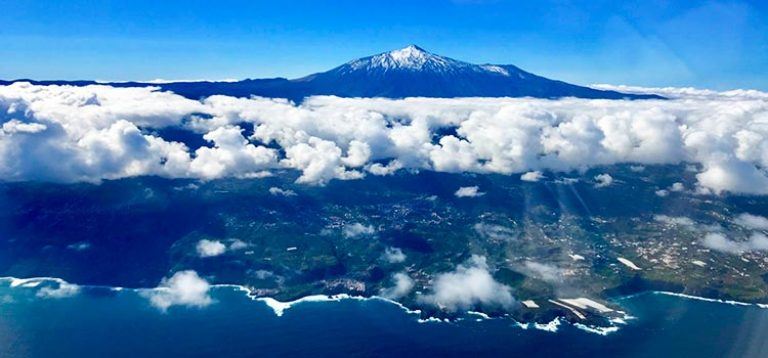The Rural Park of Teno
Teno is a small but spectacularly varied area.
In this article you will discover one of the most beautiful corners of Tenerife to make your holiday unforgettable.
The Teno Rural Park is located in the northwest corner of the island of Tenerife. It has been a protected area since 1987 and was declared a Rural Park in 1994, with the aim of conserving, protecting and restoring its natural and cultural processes and its extraordinarily beautiful biodiversity.
Its importance is even recognised at European level, as it is part of the Red Natura 2000.
It covers an area of about 8000 hectares, i.e. if it had a regular shape, it would only occupy a square of about 9 x 9 kilometres. This may seem like a fairly small space, but it contains such a variety of landscapes and hidden corners that it is unlikely that anyone will ever get to know it.
The reasons why such a limited space can contain so much diversity are its age, its verticality and its microclimates: the highest point of the park is more than 1300 metres above sea level and there are notable differences between the characteristics of humidity and sunshine depending on whether you are on the northern or southern slopes, near the coast or at the summit.
Una visita a Teno nos permite disfrutar de gigantescos acantilados y suaves valles agrícolas, abruptos barrancos tallados por el tiempo y jóvenes conos volcánicos.
The people who live in this rural park also preserve a centuries-old cultural heritage that is reflected in its architecture, local agricultural products and crafts, and some unique festivals and celebrations.
In order to achieve a harmonious development of this whole, it is necessary for the rural park to follow a careful territorial planning, with differentiated areas where, depending on the fragility of their ecological values, certain traditional or tourist activities may or may not be developed. All this in order to continue preserving this treasure for future generations.
We invite you to delve a little deeper into this legacy through the following article.
Teno, together with the Anaga and Adeje massifs, are the three oldest areas of Tenerife. From the seabed, piling up successive layers of volcanic materials, it managed to rise above the waves seven million years ago and continued to grow for some two million years more, until it rose as a massif much higher and wider than it is today.
Teno has millions of years of geological history.
Most of these materials came out quietly through long fissures, although there were also explosive episodes, the remains of which can be seen in some layers of fragmented materials, such as pyroclasts and slag, interspersed between more compact lava flows. Colossal landslides of unstable slopes towards the sea also occurred in Teno, although as they are very distant in time, they are not as easily identifiable in the landscape as other more recent ones that formed the valleys of La Orotava or Güímar.
Then, during the last 5 million years, there have only been a few eruptions, such as those of the Teno Alto cones, the Montañeta de El Palmar or the Las Portelas volcano. The lava flows emitted by some of these volcanoes reached the sea, creating new coastal plains, or low islands, which made the island grow.
But for the most part this time of constructive rest has meant that the sea, the intense rains of the past and the force of gravity have done their patient work of sculpture, giving rise to the current relief, where we can find deep ravines and sections of coastline with cliffs several hundred metres high.
Erosion has broken up the terrain, revealing the inner skeleton of the Teno massif. The dykes and rocks that dot the landscape today are the cracks and chimneys through which the magma ascended, filled in by the last materials that did not manage to flow outwards. These materials cooled more slowly in the earth’s interior than those around them, reaching great hardness. Erosion therefore takes longer to dismantle them and today they stand out from the surrounding terrain: dykes in the form of long walls and the rocks like high towers.
Erosion has carved so deeply in some cases that, in certain ravine beds, such as Masca, we can touch volcanic materials that once cooled under the sea.
The geological history of Teno is complex and diverse, with millions of years of chapters, and has not yet come to an end. The process of construction and, above all, dismantling, will continue.
Different conditions for life allow Teno to host an astonishing biodiversity.
There is a difference of 1,354 metres from the coast to the highest point of the park. This means that within a short distance there are different conditions of temperature, sunshine and humidity, which leads to the existence of different ecosystems.
The sea that bathes the coasts of Teno has been recognised at European level with the double status of Special Area of Conservation Teno – Rasca Marine Strip and Special Protection Area for Birds La Gomera – Teno Marine Area, which indicates the value of the biodiversity it harbours.
On land, but close to the shore, in areas with many hours of sunshine and little rainfall, we find small plants capable of resisting salinity, such as sea lettuce (Astydamia latifolia), sea thyme (Frankenia ericifolia), or everlasting evergreen (Limonium pectinatum).
As we gain height, we find the tabaibal – cardonal, formed mainly by the sweet tabaiba (Euphorbia balsamifera), the bitter tabaiba (Euphorbia regis jubae) and the cardón (Euphorbia canariensis), whose candelabra-like shape can exceed 3 metres. They are accompanied by other plants such as the tolda (Euphorbia aphylla) and the tabaiba mejorera (Euphorbia atropurpurea).
Coastal cliffs are home to plants adapted to living in poor soil conditions, such as various types of verodes (Aeonium spp.), tajinastes (Echium spp.) or evergreens (Limonium spp.). They are also a refuge for very rare species of animals such as the common osprey (Pandion haliaetus) and the spotted lizard (Gallotia intermedia). This lizard, which is larger than the common blight, was discovered a few decades ago and is in danger of extinction.
From about 300 metres above sea level, the temperature and humidity conditions become milder. This is the climate zone in which people generally prefer to live. For this reason, the thermophilic forests that occupy this area are among the most severely affected ecosystems on the islands. In Teno, different enclaves are preserved with palm trees (Phoenix canariensis), copses of juniper (Juniperus turbinata ssp. canariensis), white broom (Retama rhodorhizoides) and some isolated dragon trees (Dracaena draco), accompanied by other smaller species.
Where the direct influence of the Alisio, the beneficent humid wind from the northeast, reaches, one of Teno’s most valuable jewels can survive: the laurel forest. Between approximately 600 and 1000 metres, the clouds deposit their valuable cargo of droplets, allowing a forest to survive here that inhabited large areas of the Mediterranean basin until 20 million years ago but could not survive the last glaciation, finding its last bastion on some islands in the Atlantic.
Teno has one of the best examples of this forest, in the so-called Monte del Agua and Los Pasos. The laurel forest is made up of some twenty types of evergreen trees, such as the laurel (Laurus novocanariensis), the viñátigo (Persea indica) or the barbuzano (Apollonias barbujana), plus a group of shrubs, grasses, ferns, fungi, lichens and vines. Among the branches, if we are lucky, we can catch a glimpse of some cooing treasures: the common ringdove (Columba bolli) and the turquoise pigeon (Columba junoniae).
The laurel forest is a delicate forest, which requires very specific conditions of humidity and moderate and stable temperatures to survive. Of the species that form it, only the most resistant, such as the fayas (Morella faya), the heathers (Erica arborea) or the wild olive trees (Ilex canariensis) can survive a little higher up, occupying windy ridges and forming the ecosystem known as fayal – heathland, gradually giving way to the pine forests that only naturally occupy the highest enclaves of the rural park.
The record for diversity is held by invertebrates: no less than 836 species have been counted in the park so far, a number that continues to increase every year. Of these, 255 are endemic species that only live in the Canary Islands and 30 are exclusive to Teno.
Scarce resources and isolation shaped Teno’s harsh history.
Before the arrival on the island of people from the European continent (mainly from the Iberian Peninsula), an aboriginal population from North Africa settled in Teno. There are abundant traces of their culture: shelters, burial sites, shell middens, rock engravings, but above all, innumerable ancient place names of Berber origin.
After the conquest, Teno remained a territory of difficult communication. Here, people had to survive with the means available in these lands. Although there was some exchange of goods, they basically had to use what was at hand. This meant that, until very recent times, volcanic rock and local wood were used as building materials.
As in other rugged areas of the archipelago, the steep slopes had to be converted into staggered successions of small flat terraces, suitable for cultivation, and the scarce rains had to be waited for in order to obtain just enough crops to make a living. Other areas were used for pasture, to feed a herd of mainly goats and sheep, with a system of short-distance transhumance between the coast in winter and the summit in summer, to make the best use of the grass at each time of the year.
Traditionally, the houses were built on the cliffs, because it was unthinkable to build a house on a plain that could be cultivated, however small it might be. The stone threshing floors for threshing cereals, the wine presses, the tile ovens, the hermitages and cobbled paths that dot this landscape of rocks and ravines, complete the landscape of the rural park.
Teno cannot be understood without the human presence, without the way of life of a community adapted to the harshness of the territory and of an economic system that, until a few decades ago, gave most of the population the role of workers on other people’s land, in exchange for half of the harvest, through a sharecropping system called medianería.
Even so, the hard life left some time for celebrations, theatrical performances, dances and folkloric genres, as well as the useful art of basketry and woodwork, which also add to the ethnographic heritage of the rural park.
The rural park of Teno has much to offer you.
Throughout these paragraphs, we have briefly introduced you to the enormous natural and cultural diversity that the rural park possesses. Different volcanic formations, eroded ravines and colossal cliffs, volcanic cones and fertile valleys, radically different ecosystems between the coast and the summit, small hamlets and places where you can understand the life of the near past and the local ethnography…
Teno also offers you the setting for a variety of activities, from comfortable walks to sporting challenges, watching marine species, staying in small traditional houses and chatting under the laurels of the village squares.
Tasting the local products will not only allow you to discover new flavours, but will also contribute to the maintenance of the landscape. Both fresh and smoked cheese of renowned quality is produced from the milk of the goats, which are still released when the pasture is plentiful. Flower honey from the medianías, Canary Island saffron, onions from Masca and Los Carrizales, wine from the El Palmar Valley and old varieties of potatoes of exquisite flavour complete the tasty offer.
It is still possible to find handicrafts that were once very useful for everyday life and today are valued as decorative elements of great ethnographic value: straw and wood basketry in El Palmar and Teno Alto, and palm and reed basketry in Masca.
If you are lucky enough to coincide with a local festival, don’t miss its ribbon dances and its own folkloric genres, such as the tanganillo or tajaraste de Teno, the polka or the joropo. The Libreas de El Palmar dance is a unique popular performance held in September. During the carnivals and in the summer, there are festive activities in almost all the villages.
In the hope that you have enjoyed this new blog article, I invite you to call us so that we can advise you on the possible visits or experiences that can be made in this wonderful enclave of Tenerife.
Stay tuned for the following articles about the Masca hamlet and the Masca canyon.
Greetings and see you soon from your official guide of the Government of the Canary Islands nr. 3.900.
Basso Lanzone

